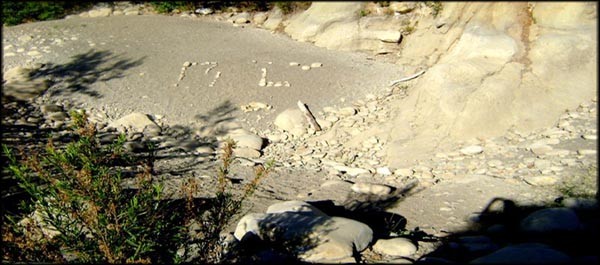Summer 2013

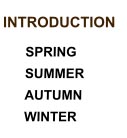
Toward an Ecohumanities
It's a ten minute walk to the trailhead, past the kaleidoscopic floral arrays in front of neighbors' homes, past the storefront Aikido dojo, the Italian restaurant, the Mexican grocery and laundromat, past a Jesus Lives sign, and a ranch's horses on whom rich kids trot in wary circles.
Where Cézanne's Mont Sainte-Victoire is burned by the same dazzling sun as Van Gogh's golden fields, a woman on horseback looks down and says: "You're gonna have a good day: a roadrunner just crossed your path."
Few brains, topped
By a crown—
And a flair for swift in-fighting—
[P. Whalen. From, "The Road-Runner"]
A slight jolt, and I wonder how many invisible beings have, without my knowledge, crossed my path.
When the First People arrived here thousands of years ago they lived off the land, both cuisine- and spirit-wise. But the marks they left, the signs and symbols they painted so brilliantly on rocks in nearby places, are not evident here. So I'll try to see what cannot be seen, and say what cannot be said.
.....................................................................................................................................................................................
Where native hallucinogens are used for sacral purposes, the gods are indigenous and erotic. Where cougar lives, mind hisses. What if our temples were discovered again, not planned and constructed?
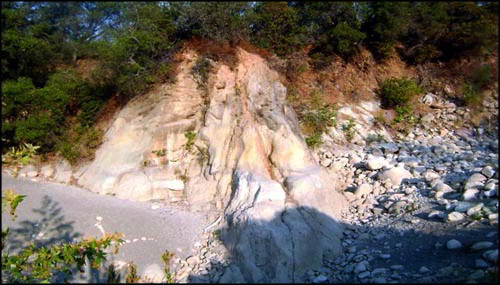
This is trickster country, stretching to green mountains walking, seeing what
I see, but with more dignity. In the distance, Coyote sings a cloud-hidden
song. In another direction, a young woman talks into a cell phone. Plants,
people, coyotes—see your shadow, then let it go—we are born
with every aspect of the world.
There were four people, one of whom was a famous opera singer. She was singing and I, along with others, was listening. Then I was asked to sing, and was handed a book in which the words of a libretto were printed. They were too dense and didactic to sing, and must be recited as a poem.
A man whose entire life felt wrong;
seeing this, feeling his mind settle
where old age can be nurtured,
he knew he would never leave.
[Po Chü-i. From, “My Thatch Hut Newly Built.”]
As I turned toward home, a dream from many years ago returned to reveal another piece of its puzzle.
I was in Alberta, Canada. My guide, a poet and race car driver, led me through a portal into a busy arcade. There was a bulletin board filled with announcements. One drew my attention, an index card with many initials, as if confirming its authenticity, circling a block-printed message: JOEL, IT’S OLDER THAN WISDOM. It was signed, Creeley.
I knew the message was from the poet Robert Creeley. How he knew I would be where I've never been before is still a mystery. Then I thought of the dreams' psychopomp. That he was a poet is evident; but why was he also a race car driver? I remembered Creeley’s poem, “I Know a Man,” and its famous closing stanza:
Drive, he, said,
for christ’s sake, look
out where yr going.
In a 1995 interview, Creeley said that "I Know a Man" was written in 1955, after his first marriage "had fallen apart."
I'd left Black Mountain (College), had come to San Francisco, I was crashed for a time on Ed Dorn and his wife then Helene and their family. I'd just met Jack Kerouac, Allen Ginsberg. I'd just connected with my terrific peers, and I was living in this little apartment on Montgomery Street off Broadway, but the point is I had no prospects, in one old-fashioned sense, but the whole world was mine! ["Robert Creeley in Conversation with Alan Riach." Recorded at the University of Waikato Hamilton, New Zealand.]
This echoes Henry Miller's memorable exaltation on the first page of The Tropic of Cancer: "I have no money, no resources, no hopes. I am the happiest man alive."
The modernist archetype of "starving artist" has never lost its relevance; however, it is not so much a lack of money (although this may help), but initiation into the essential crux of failure. The same drive animates Allen Ginsberg's poem, "Galilee Shore":
Just think how amazing! someone getting up and walking on / the water.
...............................................................................................................................................................................
Grandfather rocks
suffer the agony of lives born into a "flowering world," only
to age into "a wasteland of dry stones," because they
regarded the future "not in terms of an unremitting series
of deaths and births, but as though one's present system of ideals,
virtues, goals, and advantages were to be fixed and made secure." [J.
Campbell, The Hero With a Thousand Faces,1949/68/2008.]
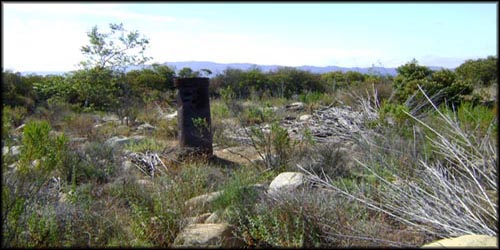
Some paths meander across the field, others loop back to where they begin again.
When a male sperm penetrates a female egg, in this union of opposites the Hero's Journey is initiated. It's a perilous passage at the mercy of an inherent genetic program, and a Mother whose agenda is unknown.
It is, in fact, the complex intertwining of genetic and epigenetic factors which guarantee the uniqueness of each individual. [A.B. ScheibelIt, "Embryological Development of the Human Brain."]
Nowhere is it written that the hero will complete the task of emergence. What is important is that miscarried, aborted, or born, the journey was begun.
...............................................................................................................................................................................
Talented young poets tend to think of themselves as unique. This buffers the fledgling ego against the stiff winds of rejection. However, those who don't recognize their predecessors will create poems that swirl in the mists of an illusionary self.
But the great dark birds of history screamed and plunged
into our personal weather
They were headed somewhere else but their beaks and pintons drove
along the shore, through to rages of fog
where we stood, saying I
[A. Rich. From, “In These Years."]
.............................................................................................................................................................................
Entering the digital realm, it is important that individual creativity not be muted by the allure of the technology. The attraction of collectivity is understandable. "In every culture, the artist or storyteller shares a language, a fund of ideas, and a common store of phrases and images. He shares these things with other artists, and he shares them with the community as a whole. Otherwise, no communication is possible." However, as the internet is naturally collective, the artist must deploy "these shared resources in an individual way." [R. Bringhurst, "Approaches to Language, Literature & Insight Practice: An Interview with Robert Bringhurst by Sergio Cohn." Pacific Rim Review of Books, 2008.]
This does not reflect on the Picasso/Braque collaboration that spawned Cubism. Braque's analogy, that they were like two mountain climbers roped together, is gripping, but not accurate. They climbed separately; then discussed each other's work like two mountain climbers bivouacking on a ledge.
Some rocks have gone their own way. I wonder why.
A
story I like to tell is of when the Buddhist scholar Naropa
left the red brick buildings of Nalanda University to search
for the master who would teach him how to make the texts
into actual practice. After many months
traveling
the dusty roads of India, he came to a village and
|
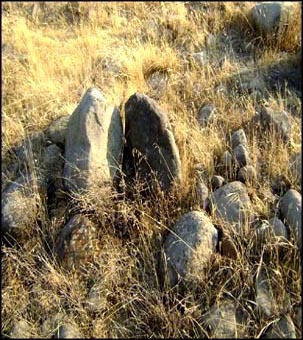 |
asked the question he'd been asking everywhere: "Does anyone know where Tilopa is?" Finally, one day he met a man who said, "Tilopa lives under the bridge with the beggars." "How will I know him?" Naropa asked. "Buy a melon."Tilopa is the one who'll grab it." |
Last night, a rare summer drizzle danced on our roof. This morning, humid fields exhale a pungent alchemy of wet hay steeped in steaming horse dung. Where light and shadow silently confer, I came upon a conclave of stones. Tilopa was the one thinking:
What if I alone cannot measure
whether I am dead, mad, or a poet?
[D. Deardorff, The Other Within. Berkeley, 2009]
Walking through Wills Creek Canyon, I thought: Ghosts are the only hope for the future of our culture. I had in mind the poets of Western Beatitude, and how their Dionysian spirits hitched down this coast and miles inland. However,
To be modern, is to give up the 'sense of place' associated with the late medieval hierarchical world in favor of a space and time conceived to be populated by infinite numbers of entirely exchangeable loci. Defending the concrete and particular as opposed to the abstract and general of this Newtonian universe, the placethinker becomes a foot soldier in the army of the anti-modern.[T. Brockelman, "Lost in Place? On the Virtues and Vices of Edward Casey’s Anti-Modernism." Humanitas, No. 1, 2003.]
In a quantumized cosmology, is there still the link between humans and the spiritual world? One theory is that the walls of Paleolithic caves were a "membrane" that served as such a scrim; the plethora of handprints attesting to a longing to break through to the other side. [D. Lewis-Williams and D. Pearce, Inside the Neolithic Mind. London, 2005] Here, this shapely rock, this spiny bush, this tough old oak, serve as portals to the imaginal. Place is not space; it's what at this moment is perceived as real.
..................................................................................................................................................................................
Small stones shifting
beneath my feet...I hit the ground rolling until my head came
to rest against a rock; that whispered: No learning without
falling. The best teachers are those who can demonstrate
how to fall.
Imagine a landscape of small animals, birds, and insects who are moment to moment rearranging it. Do stones move too? Each fraction of an inch takes ten thousand human generations, except if stirred from beneath.
......................................................................................................................................................................................
The day after the tragedy of 9/11, a poet sat on a coffeehouse patio. Circling the block was a fire engine flying a large American flag. While the other patrons waved and cheered, the poet sat stoically silent. A man at the next table said, “You don’t approve of this, do you?” The poet replied. “My job is to see deeper.” “Your job?” the man said, incredulously. “Yes,” the poet said. “My job.”
If I return a boulder, love, some summer day
come sit by me and contemplate these horses and these hills.
[B. Spacks. From, "Within Another Life."]
From a distance, it’s difficult to distinguish a natural rock formation from man-made concrete. Expect when an iron bar’s protruding, like from the head of the unfortunate Phineas Gage. But, then, he was “no longer Gage.”
...........................................................................................................................................................................................
At a lecture given at the XVI International Congress on Analytical Psychology, Barcelona, Spain, September 2004, James Hillman related a story of Gustav Theodor Fechner, whom Sigmund Freud and William James called "the most valuable thinker in psychology of the nineteenth century.” Hillman continued: "Fechner was a brilliant physical psychologist, observer, micro-measurer, laboratory experimenter, yet also more privately and under a pseudonym, speculating on dreams, the soul, the afterlife, and angels."
Then one day “his eyes gave out. He couldn’t observe, he couldn’t read. He was not blind, but he could no longer see...he protected his eyes with lead cups and retreated into a blackened room, kept alive by his wife. After close to three years in this black hole, gradually recovering physically he emerged, lifted the bandages and allowed light into his eyes” ["The Azure Vault." In, Alchemical Psychology. Uniform Edition of the Writings of James Hillman. Putnam, CT, 2010.]
Of this occasion, Fechner wrote:
I stepped out for the first time from my darkened chamber and into the garden with no bandage upon my eyes. It seemed to me like a glimpse beyond the boundary of human experience. Every flower beamed upon me with a peculiar clarity, as though into the outer light it was casting a light of its own. To me the whole garden seemed transfigured, as though it were not I but nature that had just arisen. And I thought: 'So nothing is needed but to open the eyes afresh.' [In, W. Lowrie, Religion of a Scientist. New York, 1946.]
.......................................................................................................................................................................................
At 7 A.M., the sun breaches the eastern ridge and stretches luxuriously over the valley. I pause beneath an oak's mottled shadow, twist open the water bottle that bouncing in my bag had sounded like a frog, and drink its tepid contents. No pond here. No water where a sign says "Swim At Your Own Risk." Just sweat running down my back, and a thirst for enlightenment's illusions.


